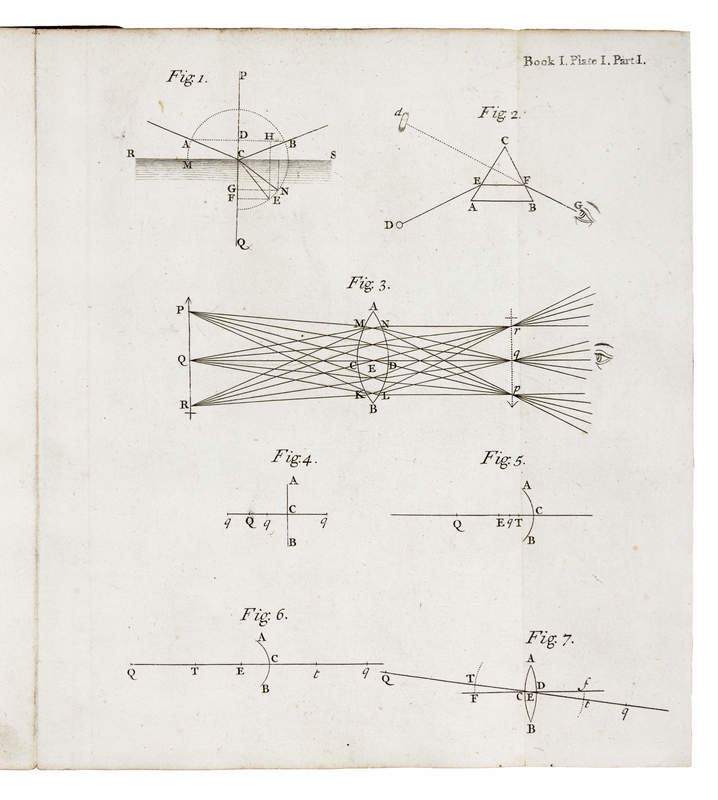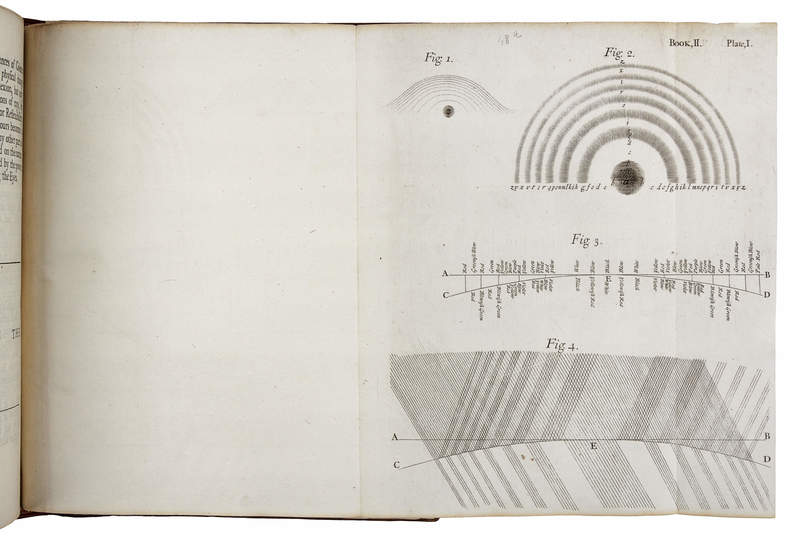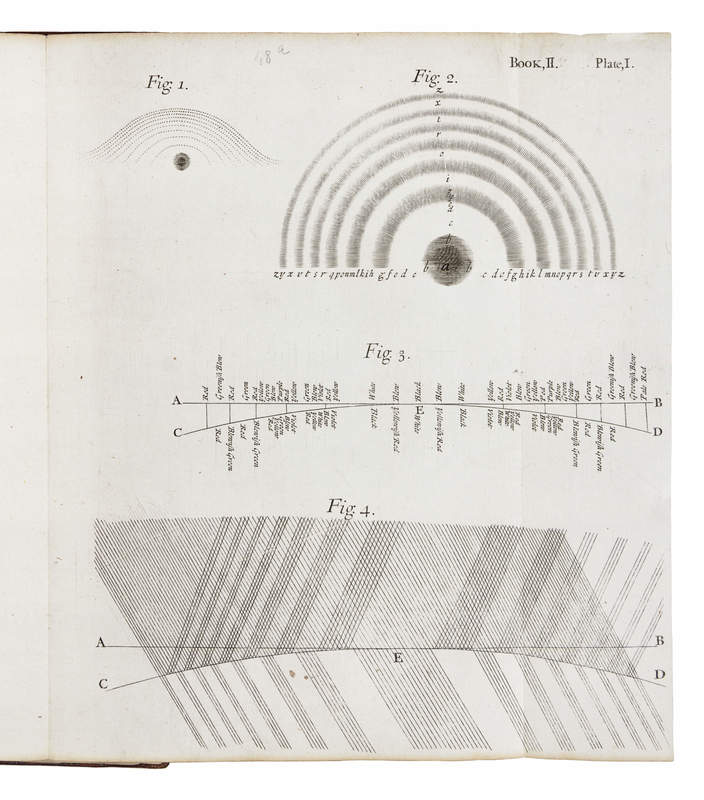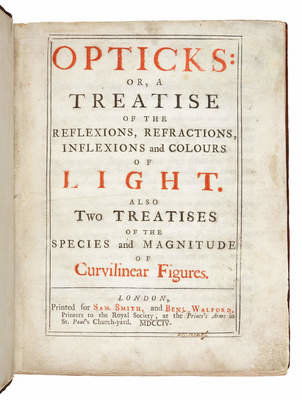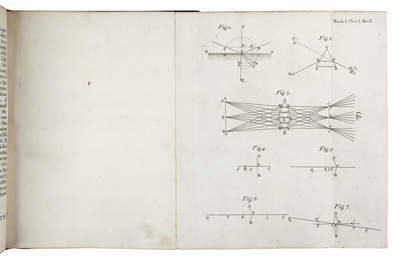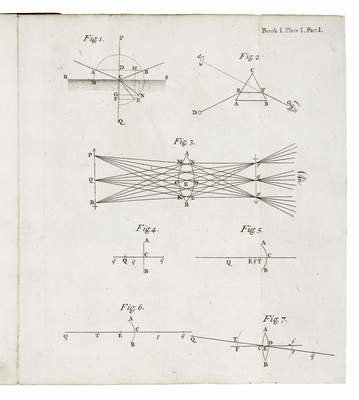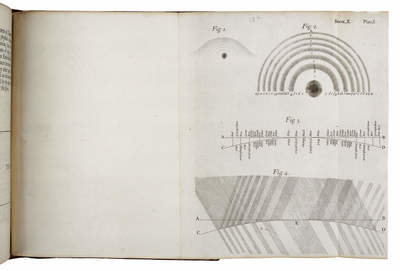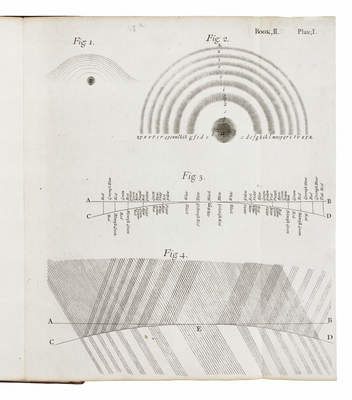Condition Report
Contact Information
Auction Specialist
Lot 62
NEWTON, Isaac, Sir (1642-1727). Opticks: or, a Treatise of the Reflexions, Refractions, Inflexions and Colours of Light. London: for Sam. Smith and Benj. Walford, 1704. FIRST EDITION, FIRST ISSUE.
Sale 714 - Library of a Midwestern Collector
Nov 5, 2019
10:00AM CT
Live / Chicago
Own a similar item?
Estimate
$30,000 -
40,000
Price Realized
$45,000
Sold prices are inclusive of Buyer’s Premium
Lot Description
NEWTON, Isaac, Sir (1642-1727). Opticks: or, a Treatise of the Reflexions, Refractions, Inflexions and Colours of Light. London: for Sam. Smith and Benj. Walford, 1704.
4to (240 x 191 mm). Title printed in red and black. 19 engraved folding plates. Woodcut diagrams and letterpress tables in the text. (Washed, title reinserted, some offsetting of plates, a few small marginal repairs not affecting text). Contemporary calf (neatly rebacked, modern endpapers, a few minor repairs); half maroon morocco folding case. Provenance: early shelfmark on title (“+5.1220.rs”?).
"MY DESIGN IN THIS BOOK IS NOT TO EXPLAIN THE PROPERTIES OF LIGHT BY HYPOTHESES, BUT TO PROPOSE AND PROVE THEM BY REASON AND EXPERIMENTS" (page 1).
FIRST EDITION, FIRST ISSUE, with the title printed in red and black within a border and with the imprint, but without the author’s name, and with the two treatises on calculus at the end. Opticks was "every bit as revolutionary and challenging, and every bit as controversial as the Principia" (Feingold).
Newton first theorized about light and color in his first published paper in 1672. In Opticks, he summarizes his discoveries and includes his work on the spectrum of sunlight, degrees of refraction associated with different colors, the color circle, the rainbow, and his invention of the reflecting telescope. "The core of his work was the observation that the spectrum of colours (formed when a ray of light shines through a glass prism) is stretched along its axis, together with his experimental proof that rays of different colours are refracted to different extents. This causes the stretching, or dispersion, of the spectrum. All previous philosophers and mathematicians had been sure that white light is pure and simple, regarding colours as modifications or qualifications of the white. Newton showed experimentally that the opposite is true" (PMM). Unlike most of Newton’s works, Opticks was first published in English, and was not published in Latin until 1706.
Opticks concludes with two mathematical papers in Latin, published to establish Newton’s priority over Gottfried Wilhelm von Leibniz in the invention of calculus. "In a Letter written to Mr. Leibnitz in the Year 1676 and published by Dr. Wallis, I mentioned a Method by which I had found some general Theorems about squaring Curvilinear Figures, or comparing them with the Conic Sections... And some Years ago I lent out a Manuscript containing such Theorems, and having since met with some Things copied out of it, I have on this Occasion made it publick" (Newton's "Advertisement"). Babson 132; Dibner Heralds of Science 148; Feingold The Newtonian Moment pp. 41-42; Grolier Science 79b; Norman 1588; PMM 172.


